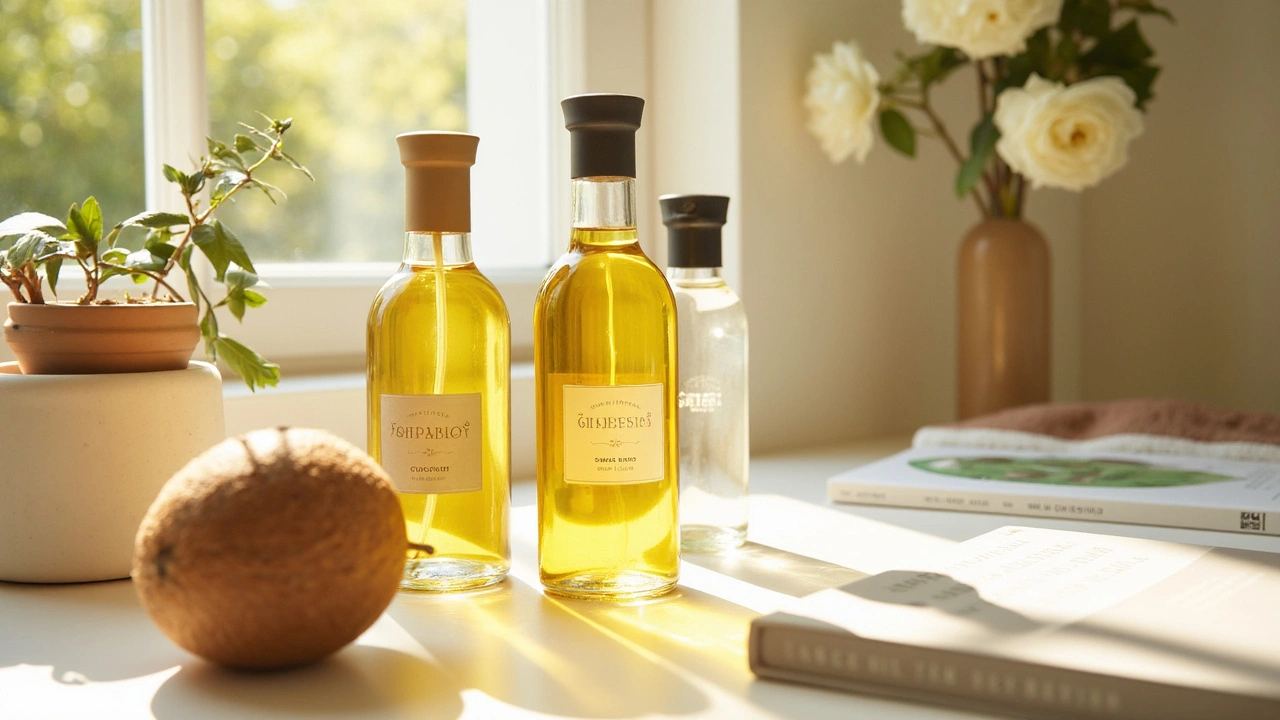Massage Oils: Your Quick Guide to Choosing and Using the Best Oils
Feel the difference a good oil can make in a massage. Whether you’re at a spa in Shoreditch or a private session at home, the right oil helps the therapist’s hands glide smoothly and adds a sensory boost. In the next few minutes you’ll learn what to look for, which oils suit different styles, and how to keep your skin happy.
Why the Right Oil Matters
Oil isn’t just a slippery base – it can deepen relaxation, ease muscle tension, and even influence mood. A light citrus blend might lift your spirit during a head massage, while a heavier nut oil adds cushioning for a deep tissue session. The oil you choose also affects skin health; some oils moisturize, others can cause irritation if you’re sensitive.
Tips for Picking and Using Massage Oils
Start with the massage type you plan to get. For a soothing full body or sensual tantric massage, a neutral carrier like sweet almond or grapeseed works well because it doesn’t mask other aromas. If you’re booking an Indian head massage, a few drops of peppermint or tea tree can invigorate the scalp and support hair health.
Check the ingredients list. Pure, cold‑pressed oils have fewer additives and retain natural nutrients. Avoid oils with synthetic fragrances if you have allergies – natural essential oils are safer when diluted properly.
Mixing is easy. A common ratio is 2‑3 ml of essential oil per 30 ml of carrier oil. This gives a pleasant scent without overwhelming the skin. For a quick at‑home session, add a few drops of lavender to a tablespoon of jojoba; the combo relaxes muscles and calms the mind.
Temperature matters, too. Warm the oil in your hands for a few seconds before the therapist starts. Warm oil opens pores and lets the scent spread faster, making the whole experience feel more luxurious.
When you book a session, ask the therapist about their oil lineup. Many London therapists keep a small menu – you might find exotic options like argan, rosehip, or even custom blends designed for sports massage or lymphatic drainage. Knowing the options lets you match the oil to your goal, whether it’s muscle recovery after a marathon or stress relief after a hectic week.
After the massage, give your skin a moment to absorb the oil. If you’re at home, you can gently blot excess oil with a soft towel. Leaving a thin layer on helps keep your skin hydrated for days.
Quick safety checklist: do a patch test if you’re trying a new oil, keep oils away from your eyes, and store them in a cool, dark place to prevent oxidation. With these basics, you’ll get the most out of every session and avoid common pitfalls.
So next time you book a massage in London, take a minute to think about the oil. A small choice can turn a good massage into an unforgettable one. Happy relaxing!
Indian Head Massage Oil: What to Use for the Best Results
Picking the right oil for Indian head massage can boost your experience and results, from healthier hair to deeper relaxation. This article breaks down popular oils, their unique benefits, and practical tips on how to choose the best one for your needs. You'll find out how natural oils like coconut, almond, and sesame behave on the scalp. Plus, get advice on what to avoid if you have allergies or sensitive skin. Whether you're booking a session in London or massaging at home, you'll know exactly what oil to ask for.
VIEW MOREBest Oils for a Relaxing Full Body Massage – Feel the Difference
Looking for the perfect oil for a full body massage? Get the facts on which oils make massages smoother and more relaxing. Find out how different oils can help you unwind, soothe sore muscles, and even care for your skin. Plus, tips on keeping things simple and safe. Whether you're a pro or just getting started at home, these choices can make your next massage way better.
VIEW MORE

